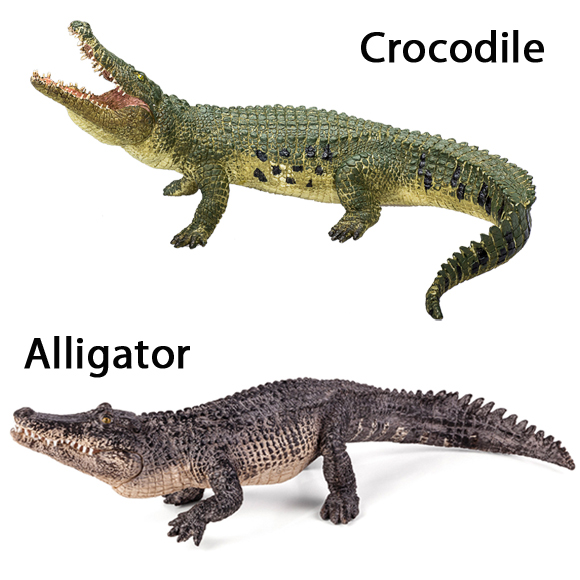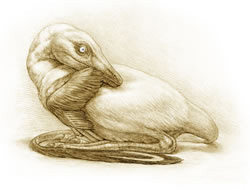If Crocodiles and Some Birds Sleep with One Eye Open – Could Dinosaurs? A Great Question!
Unihemispheric Sleep and the Dinosauria
A new study from scientists from the Max Planck Institute for Ornithology (Seesiesen, Germany), and La Trobe University (Melbourne, Australia) suggests that juvenile Saltwater crocodiles might sleep with one eye open. This could be an indication of a phenomenon observed in aquatic mammals, some birds and reptiles, that of unihemispheric sleep. Unihemispheric sleep occurs when only half the brain slumbers whilst the other half remains alert.
Sleeping with One Eye Open
This ability may have evolved in unrelated groups of animals independently, a case of convergent evolution, whereby similar characteristics evolve in unrelated animals as a result of having to adapt to similar environments or conditions. Alternatively, this ability could have evolved long ago, in the shared, common ancestor of modern birds, mammals and crocodiles.
Dinosaurs Sleeping
This newly published information, reported in the Journal of Experimental Biology, involved the study of the responses of young Saltwater crocodiles (Crocodylus porosus). The team filmed the reptiles and recorded their reactions to certain potential threats, such as the presence of another crocodile or a human. It was noted that the crocodiles usually slept with both eyes closed.
However, in the early part of the day, it was observed that the crocodiles opened one eye briefly during periods of sleep. When isolated crocodiles had a second crocodile introduced into their tank, the crocodile kept their open eye on the intruder.
The researchers state that this is consistent with a “vigilance function” – staying aware of danger. When a person entered the crocodile’s enclosure, whilst the crocodiles appeared to slumber, they actually took a lot of notice, keeping their vigilant eye focused on the potential threat for several minutes at a time.
Unihemispheric Sleep
A number of vertebrates have this ability to keep one eye open and connected to the conscious half of the brain. The closed eye is connected to the other half of the brain that has shut down and is resting. This behaviour may have evolved to help animals avoid predators. In addition, aquatic mammals like dolphins keep one eye open when sleeping so that they can remain close to their pod. Perhaps young crocodiles keep one eye open when sleeping to help them stay aware of their siblings as well as looking out for danger.
Commenting on the significance of their research, senior author of the academic paper, Dr John Lesku (La Trobe University), stated:
“They definitely monitored the human when they were in the room. But even after the human left the room, the animal still kept its open eye… directed towards the location where the human had been – suggesting that they were keeping an eye out for potential threats.”
Potential Implications for the Dinosauria
With the majority of dinosaurs being ground-dwelling, the implications of this study can be quite profound. If some birds and now crocodiles sleep with an eye open, then perhaps the dinosaurs did as well. Birds and crocodiles are the closest living relatives of the Dinosauria. Could this study provide an insight into the sleeping habits of dinosaurs? Resting on the ground, unable to climb a tree to roost or to hide in a burrow, a sleeping dinosaur may have been very vulnerable to attack.
Living in a social group such as a herd would have offered some protection, after all, some of the herd members could sleep whilst the remainder stayed vigilant but this new study does lead onto the intriguing question as to whether members of the Dinosauria were capable of unihemispheric sleep to.
Did Dinosaurs Sleep with One Eye Open?
The animals used in the study were less than half a metre in length and Everything Dinosaur is not aware of any research of this nature carried out on larger crocodiles, or indeed of any study undertaken to ascertain the sleeping habits of crocodilians in the wild. The researchers conclude that crocodiles may sleep with one eye open, but to confirm unihemispheric sleep they need to be able to monitor the brain activity in both brain hemispheres of a sleeping crocodile.
Attaching sensors to the skull of even a half-metre-long crocodile will present quite a challenge. In order to confirm the team’s ideas the researchers might have to risk losing a finger to these feisty carnivores.
For dinosaur models and figures: Dinosaur and Prehistoric Animal Figures.



